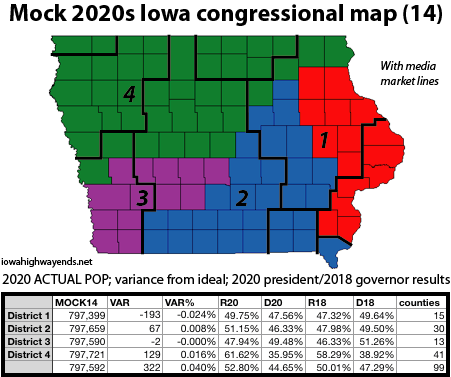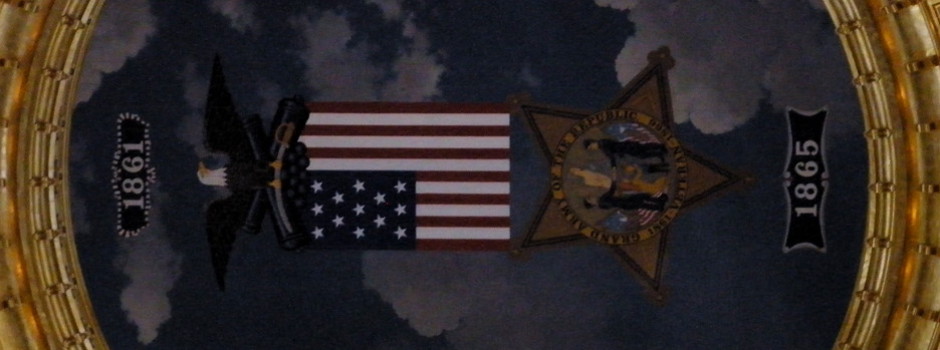Bonus Saturday post!
Had the census numbers been released Monday or Tuesday, when I had a full evening to play with them, I would’ve come up with this map earlier. It might have even superseded Mock 13 entirely.
Once I had fresh eyes, I looked at the previous product. There is no way I’m going to get better than that 3rd. The 4th is sprawling, but it has to sprawl, and it has extensions but no mid-state danglers. That reduced my work to: Can I take the remaining counties and make those two districts better? Yes!

This map has a congressional district variance of less than 300, and .037%. For comparison, in 1981 the equivalent numbers were 217/.045%; in 1991 they were 265/.05%; in 2001 they were 134/.023%; in 2011 29/.00384%. Shrinking from five to four could have contributed to the exactness of last decade’s plan, but my plan here is at least competitive with previous decades’ variances.
The 2011 plan aimed for 761,589 per district; the 2021 plan aims for 797,592, or about 36,000 more in each.
Components of this map have precedent in previous maps. Polk County as the tip of a southwest district is the 1990s 4th. Allamakee and Winneshiek counties as the extension of a northern district is the 2000s 4th. A tower including Tama and surrounding counties is kind of like the 1980s 3rd, except this time it’s the top instead of bottom. A district taking a big swath of southern Iowa and going up like a triangle is the 1990s 3rd, except this one goes farther north.
What this map loses vs. Mock 13 is the 1st’s compactness. I believe that is made up for with a decline in the 2nd’s perimeter. The 2nd gets better on compactness as well, actually, as the length-width measurements are simply comparing the widest part (Taylor to Lee counties) with the tallest (Missouri line to Bremer). The 4th is probably twice as wide as it is tall.
Politically, all I can say is, let’s get ready to rumble. The first three districts sit squarely in the middle, with statewide candidates in the 46%-52% range in these configurations. The “Channel 9 Election” — Ashley Hinson vs. Liz Mathis, both Linn County residents and former TV anchors — is going to be fought in their home market and also the Quad Cities. Johnson County gets paired up with even more of southern Iowa. Story County resigns itself to another decade of Randy Feenstra, who now gets to attend Nordic Fest in Decorah.
The Legislative Services Agency is on the clock.
On a related note, has anyone seen an actual LIST of city populations, or am I going to have to copy and paste those numbers 900-plus times too?
UPDATE 9/22: Fixed slight Scott County population error.
